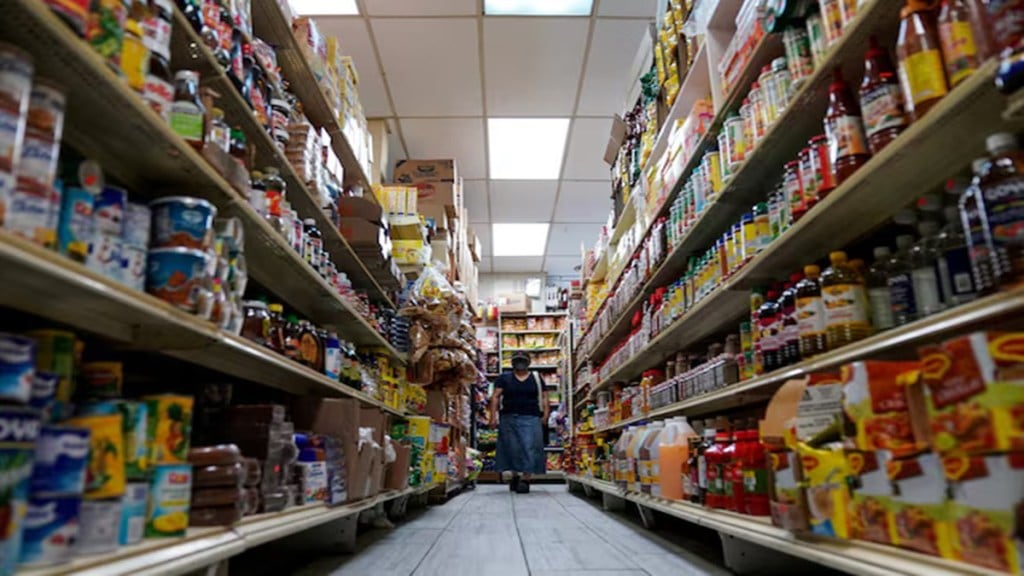Once the backbone of domestic consumption, India’s middle class, which represents 31% of its population, is cutting back sharply on daily and discretionary expenditure. The warning bells were first sounded by Nestle India’s chairman and MD Suresh Narayanan, a company best-known for its brand of noodles (Maggi), instant coffee (Nescafe) and chocolates (KitKat) among other products. Narayanan said that the ‘middle segment’ of consumers, a key category for most fast-moving consumer goods (FMCG) companies, was shrinking, resulting in diminishing fortunes for these firms.
“Earlier when there was pressure on the middle class, it would last for a quarter or so. But now, it has lasted for two to three quarters, which is worrisome,” Narayanan said, after the company reported its slowest quarterly growth for the July-September period in eight years.
Since much of the middle class in India resides in cities, FMCG companies have seen urban slowdown pangs hit growth rates in recent quarters, experts say. For instance, urban volume growth in the June and September quarters was stagnant at 2.8% versus rural volume growth which improved from 5.2% in the June quarter to 6% in the September quarter, according to NielsenIQ data. Industry sources say that urban volume growth numbers for the December quarter may show a drop from levels seen in the June and September quarters as demand has remained weak during the period. Rural volume growth numbers are likely to show a further improvement from a sequential perspective as the momentum remains strong.
Britannia’s vice chairman and MD Varun Berry says that much of the decline in FMCG growth rates in urban areas can be traced to the pressure on FMCG wallet shares in metros and big cities, as rising housing prices, an increase in food inflation and low wage hikes has led to a vicious cycle of weak consumer sentiment and therefore weak sales for FMCG companies.
“Housing costs, which make up 22% of the CPI basket in urban areas, have been on the rise. This is creating stress for most consumers in large cities and metros. The second is a slowdown in wage growth of the non-salaried workforce in urban areas, which has risen 3.4%, slower than inflation,” Berry said.
A recent FICCI-Quess Corp report on the marginal increase in wage growth in the corporate sector, despite a four-fold growth in profits over the last four years, has brought the issue of stagnant wages into sharp focus in India. The report, prepared for the government, notes that the compounded annual wage growth between 2019 and 2023 in key sectors including engineering, manufacturing, FMCG, retail, IT and BFSI, has hovered between 0.8% to 5.4%, contributing to slowing of demand among the middle classes. Policymakers have indicated that this is detrimental to the corporate sector as there will not be adequate demand for its products if demand among middle-class remains weak. This is even as consumption at the premium end remains strong, leading to companies keeping their premiumisation agendas intact.
Market research agency Kantar has alluded to this trend as well. A recent report by the market researcher states the share of socio-economic classes A and B, who are affluent consumers, has jumped to 45.5% and 30.8% each in 2024. While the share of socio-economic classes C, D and E, which are middle class and lower middle-class consumers, has shrunk to 40.1% in 2024.
This drop in share, Kantar says, has been triggered in part due to economic shifts and stagnating real incomes following the pandemic. This has put significant pressure on urban consumption, causing it to slow more sharply compared to rural areas.
“Effectively, the recovery post-Covid is K-shaped, squeezing the middle class,” Soumya Mohanty, managing director and chief client officer, Kantar South Asia, said. “In 2024, people (within the middle class) felt poorer, leading to stagnating consumer confidence,” she said.
Kantar also says that urban demand could remain subdued in 2025, as high inflation hurts real incomes.
